
|
| |
|
|
|
|
 |
|
|
German 10.5 cm leFH 18 Howitzer
|
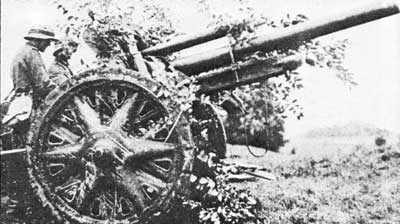
10.5cm leFH 18 (leichte Feldhaubitze 18)
|
A Brief History of the German 10.5 cm Howitzer
In the aftermath of WWI the artillery branch of the German army, much reduced by the Treaty of Versailles, choose to examine the performance of their guns and howitzers.
It was decided that the howitzer was the best weapon for their vision of future warfare. The high trajectory and heavier payload delivered by the 10.5 cm howitzer far out weighed the range advantages of the 7.5 cm field gun, which fired a lighter projectile from roughly the same weight weapon.
|
|
Initially the Germans still had large stocks of their WWI vintage 10.5 cm leFH 16 howitzer, but it was soon decided to develop a modern replacement. New designs were worked on from 1928 under the leadership of the Rheinmetall Company. The final production model was introduced into service in 1935. Nothing revolutionary or unusual was incorporated into the design, but it proved to be reliable and a very stable firing platform. It had a range of 10,675 metres.
It was a well constructed, if somewhat heavy
weapon, and provided reliable service through out the entire war.
|
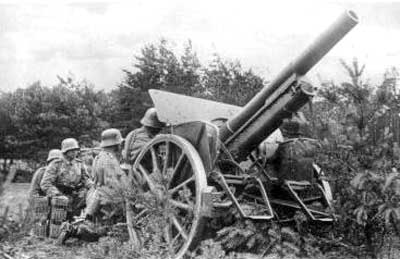
|
|
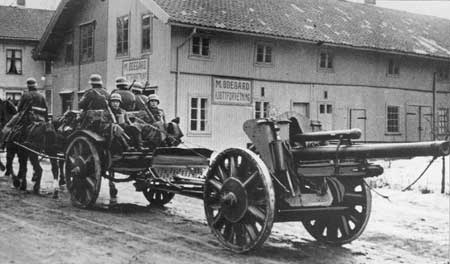
|
Seeing service on all fronts and in all conditions. It was also
exported to Hungary and Spain before 1938 and saw service with the
Hungarians on the Russian front.
Increased range was desired after the Polish campaign and a more powerful charge was introduced in 1940. To cope with the increased recoil a muzzle brake was added to the end of the leFH 18 barrel, this became the leFH 18M. The weapon now ranged out to 12,325 metres.
|
|
During the French campaign the leFH 18 was often pressed into service in the anti-tank role when isolated pockets of heavily armoured French tanks, like the Char B and Somua, made breakthroughs. The 10.cm leFH 18 and the famed "88" were often the only weapons available to stop these thunderous beasts.
While its weight proved useful in its sturdy construction and as a stable firing platform, it was a draw back when it came to manoeuvrability.
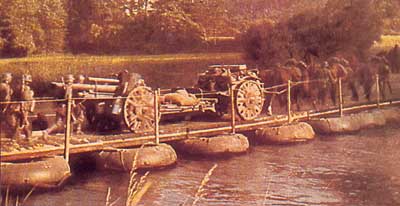
|
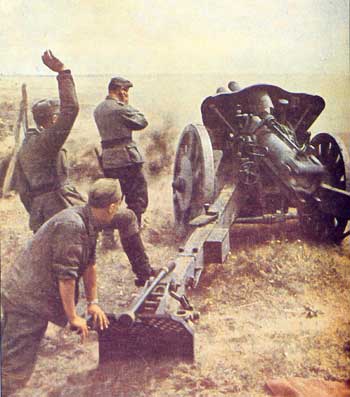
|
|
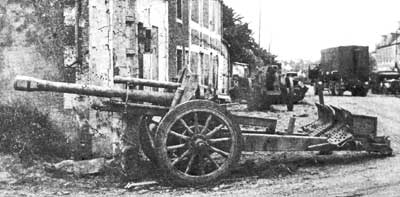
|
It weighed 1985 kgs, which increased to 2050 kgs once the muzzle brake was added. During the Russian winter of 1941/42 the mud proved too much for many leFH 18. Many were abandoned to be captured by the Soviets when their crews could not drag them from the mud. Despite being designed with motor traction in mind, the German artillery still relied heavily on horse drawn limbers as it’s main means of motive power.
|
During 1942 thought was put into how to over come this design flaw. The final result was the leFH 18/40 which utilised the much lighter PaK 40 trail and wheels (wider wheels were introduced later) for its carriage, though the result wasn’t substantially lighter than its predecessor, 1900 kgs, its was put into production in 1942. The leFH 18 continued to be the main form of artillery in the German army, the introduction of the leFH 18/40 merely supplementing those already in service.
|
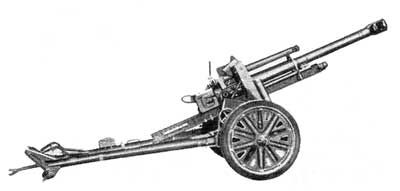
|
|

|
A total of 6986 leFH 18s and 10265 leFH 18/40s were manufactured during the war to add to those already in service in 1939.
The Germans did consider a complete redesign, Krupp, Rheinmetall and Skoda put new designs forward, but none of these designs were adopted.
|
|
The Soviets did build a new 122mm howitzer essentially the same as the
Skoda submission. It had 360° on-carriage traverse and the ability to
fire at high angles much like an Anti-aircraft gun, essentially to be
able to fire from heavily wooded areas.
The 10.5 cm leFH 18 howitzer was a good weapon that served the Wehrmacht well. It maybe thought of as the plain Jane of the German gun arsenal when compared to more glamorous contenders like the 8.8cm FlaK 36 and the 7.5 cm PaK 40, but in overall damage done to the Allies the leFH 18 would be hard to beat.
|
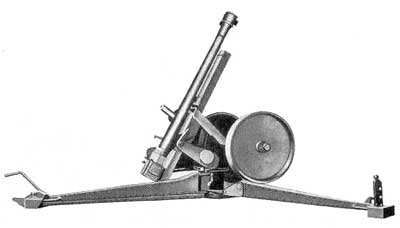
|
Last Updated On Wednesday, December 5, 2007 by Wayne at Battlefront
|
|
|